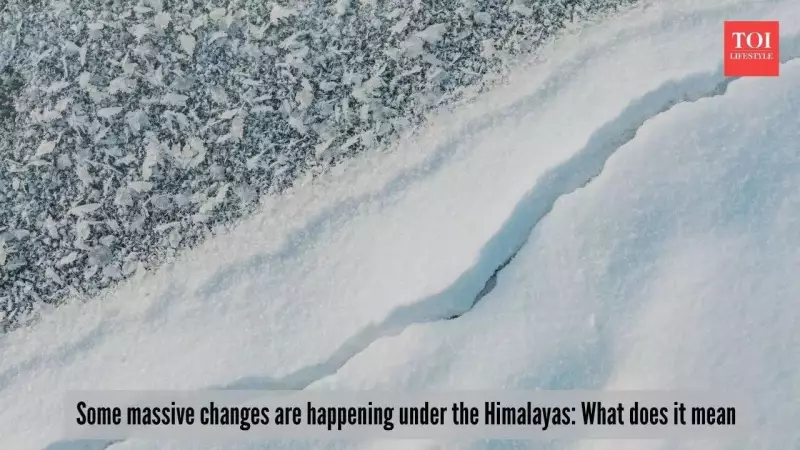
Beneath the majestic Himalayas, a dramatic geological transformation is unfolding that could significantly impact seismic activity across the region. Groundbreaking research using advanced seismic imaging techniques has uncovered that the Indian tectonic plate is not simply sliding beneath the Eurasian Plate as previously thought, but is actually warping, tearing, and splitting apart.
The Shattering Truth Beneath the Mountains
For decades, scientists believed the Indian Plate moved as a relatively solid unit, smoothly sliding beneath Tibet's crust in a process called underplating. However, new three-dimensional seismic imaging using S-wave receiver function techniques has completely challenged this conventional understanding.
The research reveals that the Indian Plate is far from being a uniform, unbroken slab. Instead, it demonstrates significant deformation along its length, particularly around 90° to 92° east longitude, near critical rift zones including Yadong-Gulu and Cona-Sangri. This discovery fundamentally alters our comprehension of what's happening deep beneath the world's highest mountain range.
Eastern vs Western Himalayas: A Tale of Two Plates
The study highlights striking differences between the eastern and western sections of the Himalayan region. In the western Himalayas, the plate remains mostly intact and slides beneath the crust approximately 100 kilometers north of the Yarlung-Zangbo suture.
However, the eastern section presents a dramatically different picture. Here, the lithospheric mantle of the Indian Plate appears to have undergone delamination - meaning the dense lower part has peeled away from the upper crust and sunk deeper into Earth's mantle. This peeling process creates what geologists call an asthenospheric wedge, a zone of molten, soft rock sandwiched between the separated layers.
The research also indicates that the newly forming Tibetan lithosphere extends about 100 kilometers south of the suture, suggesting ongoing growth and evolution of Tibet's geological foundation.
Implications for Earthquake Activity and Regional Safety
These findings provide crucial insights into why the Himalayan region experiences such frequent and powerful earthquakes. The tearing and delamination of the Indian Plate introduce additional stresses into Earth's crust that can trigger seismic events.
Simon Klemperer, a geophysicist at Stanford University who contributed to the study, emphasized the significance of these discoveries. "The tearing and sinking of the plate could create new stress points in the Earth's crust, triggering more frequent and potentially more powerful quakes," he stated during a presentation at the American Geophysical Union.
The research connects deep fractures, such as those at the Cona-Sangri Rift, directly to this plate tearing phenomenon, potentially heightening seismic risks in affected areas. These conclusions are supported by observations of helium gas emissions from Tibetan springs and patterns of deep earthquake activity that have long puzzled scientists.
However, researchers caution that more investigation is needed. Fabio Capitanio, a geodynamicist at Monash University, noted that "It's just a snapshot, and much more data is needed to understand the full picture," pointing to ongoing research aimed at clarifying these complex subterranean processes.
The study confirms that the Indian tectonic plate hasn't been simply sliding beneath the Eurasian Plate for the past 50 to 60 million years - it has been actively splitting and deforming, creating a more dynamic and potentially hazardous underground environment than previously imagined.





